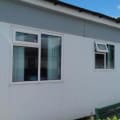Carpentry
Ashington - NE63
Enquiry from: Lisa S
Start Date: Immediate
Built in bedroom wardrobes for too floor bedroom.
Over 28 reviews & an average rating of 4.7/5 stars, you'll find the right pro
Use the shortlist button to select up to 4 tradespeople, enter your project details and press send
Get up to 4 quotes from local Carpenters near you






Ashington - NE63
Enquiry from: Lisa S
Start Date: Immediate
Built in bedroom wardrobes for too floor bedroom.
Ashington - NE63
Enquiry from: Leighton P
Start Date: Immediate
Hi Looking for a rough cost for a replacement window is a mock half Georgian with the top half (8panes) opening inward. Size 123cm high 100cm wide also a door “standard size” and the frame for i...
Ashington - NE63
Enquiry from: Malcolm G
Start Date: Immediate
removal of garden waste and weeds from between patio block paving. demolish and remove brick wall construct shed to house paving pressure wash paving lift and store paving in shed. are you the propert...
Ashington - NE63
Enquiry from: Karl G
Start Date: Immediate
i’d like a concrete base installed for a summerhouse that’ll be 14’ x 10’. the ground is sloping. are you the property owner: owner of the property do you have a: medium size garden what level...
Ashington - NE63
Enquiry from: Heather C
Start Date: Immediate
looking for a bike shed 6x4 are you the property owner: owner of the property do you have a: large garden what level of service are you looking for: supply please call to appoint
Ashington - NE63
Enquiry from: Col R
Start Date: Immediate
Put a rain drAin to front of house 6m long in front of patio doors to drain into garden need to half 300 x 300 paving slabs and Rebed in Property Type: Semi detached Are you the property owner: Relati...
Ashington - NE63
Enquiry from: Harry M
Start Date: Immediate
Customer visited the mygardeningprices.co.uk site and submitted an enquiry. Property type: Terrace, Work description: To prepare garden for laying ASTRO TURF and to remove any thing not required aft...
Ashington - NE63
Enquiry from: Dawn T
Start Date: Less than one month
Customer visited the myflooringprices.co.uk site and submitted an enquiry. Property owner: Owner, Work description: 32 Sq meters in living room, dining room and entrance hall way. We have flooring j...
Ashington - NE63
Enquiry from: Kevin B
Start Date: Immediate
decking for a table and four chairs the table is circular and is about 210mm - Estimated Service Date: 01/05/2016 - Estimated Decking Area (sq ft): 24 - Reason for Request: To just have an idea of the...
Ashington - NE63
Enquiry from: Lynda A
Start Date: Immediate
back gate and posts. internal door repair/replacement. Time scale: Immediate
Ashington - NE63
Enquiry from: Alex L
Start Date: 1 to 3 months
For small area of garden, on a slight incline so will require one step up to the actual decking Are you the property owner: Owner of the property Property Type: Semi detached What level of servic...
Do you have a need for a carpenter in or around your house? If yes, then one of the first things you’d probably want to know is the exact amount it would cost to get the project over the line. Now, carpenters are skilled craftsmen that are able to make things with wood and fabricate all sorts of wood constructions. The price charged by carpenters are determined by a wide range of factors which makes it nearly impossible to provide a short and accurate estimate without having a look at your unique requirements. In this post, we’re going to give you an in-depth insight into general carpentry charges while also considering some of the influencing factors. Let’s take a look!
Some of the most common factors that determines the price charged by a carpenter includes the project type, the size as well as scope of the project, the location of project, ease of access, experience and qualification of the carpenter and lots more. For instance, if the job is a minor one such as building a shed, it’ll cost a lot less than something more complex which requires a bit more experience like constructing a staircase. In general, building a shed will have a labour cost within the range of £150 to about £250, while a staircase construction will require a labour cost in between £1,000 to £1,500. For general carpentry, you can expect to pay within the range of £20 to £30 hourly rate depending on a number of factors which are stated above. It’s also important to state that while some carpenters charge per hour, others by the day and several of their projects will be charged at fixed prices.
The table reveals the kinds of work that Carpenters normally do and also the regular cost range of these jobs. Some tasks take longer to finish than others so costs do differ by task.
View our Carpenter cost guide View our Carpenter advice| Carpenter job | Carpenter cost in 2025 |
|---|---|
| Kitchen Fitting in Ashington | £975-£2,495 |
| Carpenters and joiners in Ashington | £375-£575 |
| Plasterboard dry lining in Ashington | £638-£978 |
| Wood flooring in Ashington | £750-£1,150 |
| Wooden decking in Ashington | £1,125-£1,725 |
| Garden shed in Ashington | £450-£690 |
| Wooden window repair in Ashington | £320-£480 |
How Much Is Plasterboard?
Do you wish to install plasterboard in the nearest future? If yes, then you’d probably want to know the amount it’s going to cost. Here, we’ll give you a detailed plasterboarding prices breakdown to help you calculate an estimate for your project.
A plasterboarding project including the cost of both materials and labour with the use of a high quality panels is about £4 to £5 per panel. Therefore, if you wish to calculate on the basis of a standard room about 12x12ft would cost about £500 to £600. However, this price can fluctuate significantly depending on the professional as well as the quality of the materials you wish to incorporate in completing the project. We’d recommend that you hire the services of a professional with accreditation as he would provide you with a detailed quote with no hidden charges or costs. To give you a clearer idea, we’ve taken the time out to put together some estimated costs of employing the services of a seasoned professional plasterer to supply and plasterboard your home or office. Let’s take a look!
• A 6 x 12ft room with panels and plasterboard should have an average cost within the range of £250 to £400 and duration of one to two days.
• The individual cost of plasterboarding or drywalling a standard 12 x 12ft room should have an average cost within the range of £500 to £600 and duration of one to three days. These includes 60% for materials used (£330), 30% for tradespersons (£165) and the remaining 10% for waste removal (£55) to give a total cost of £550.
• A 12 x 24ft room with panels and plasterboard should have an average cost within the range of £1000 to £1200 and duration of three to six days.
Two of the commonly used terms in the UK and Irish construction industry is “First Fix and “Second Fix First fix encompasses all the work required to take a building from foundation to stroking plaster on the interior walls. This comprises of building walls, floors and ceilings, and implanting cables for electrical supply and pipes for water supply.
Some claim that First Fix starts after the shell of the building is complete, and ends when the walls are plastered. Some of the elements in the first fix are as follows.
• Drain runs: must be downhill and straight
• Spare conduits: drawstrings
• Soil pipes
• Copper pipes
• Normal pipes
• Doorbell
• Door frames
• Pocket doorframes
• Stairwell
• MVHR (mechanical heat recovery ventilation runs)
• Push-fit or other plastic piping
• Electrical back boxes
• Electricity cable runs
• Telephone, data and audio-visual cables
• Socket location
• Security
• Fire alarm
• Sound insulation
• Plasterboarding
It is to be kept in mind that the list goes on as there are several things that you can do when you are building a house from scratch and it is impossible to cover each and every aspect in detail.
The second fix includes all the work after the plastering of a complete house. These include linking cables to the electrical fittings, coupling pipes to the baths and sinks and fitting doors into doorframes. Second fix work requires a tidier finish than the first fix.
Carpenters, electricians and plumbers get a proper idea on the division of work. They will also be able to visit the construction site at different times.
Project managers can simply report it as the "first fix complete" or "the second fix 50% done" and others would very easily understand.
Regardless of the fact that a construction company might specialise in a certain form of fix, be it the first or the second, they are obligated to have a rudimentary understanding of both and are required to perform them from time to time.
What Is Plasterboard?
The plasterboard is unarguably one of the most common building materials across the globe. Sometimes referred to as gypsum board, gyprock, drywall or wall board, the plasterboard is mostly incorporated for ceiling cladding and interior walls in several homes and offices in recent times. However, despite its global acceptability, it’s a very misunderstood building material.
The plasterboard is manufactured using a gypsum core with a heavy paper covering both sides of the sheet. The measurement of a standard plasterboard sheet is a length of 2.4 metres in and a width of 1.2 metres, with a thickness of about 13mm. The board usually have either a bevelled or a bit flat edge. The bevelled edge makes it easy for the installers to use a plaster to smooth out the surface after nailing the sheets to walls and ceilings as well as taping the edges.
The plasterboard comes in different types. Although various manufacturers provide a unique name for their products, but they’re all included in one of the following categories:
• Water Resistant Plasterboard - This type of plasterboard are best suited to be used in water areas like bathroom, laundry rooms and kitchens.
• Acoustic Plasterboard - Due to its sounding proofing qualities, this type of plasterboard is preferred to be used in home theatres or noisy areas.
• Flexible Plasterboard - This is to be incorporated on curvy surfaces.
• Fire Resistant Plasterboard - Just like the name implies, this type of plasterboard is best suited for use in high fire hazard areas.
If you’re about to kick start some small renovations around your house or office, using a plasterboard to clad your walls is a very simple and worthwhile task. However, if you want to do major renovations or need to apply plasterboard to your ceiling, the best option would be to leave it to a seasoned professional.
Answer a few quick questions to help us match you with the right Carpenter
Receive no-obligation quotes from 4 Carpenters working in Ashington.
Compare prices, customer reviews and services, and hire the right Carpenter.
View our open Carpenter jobs near you
Join today